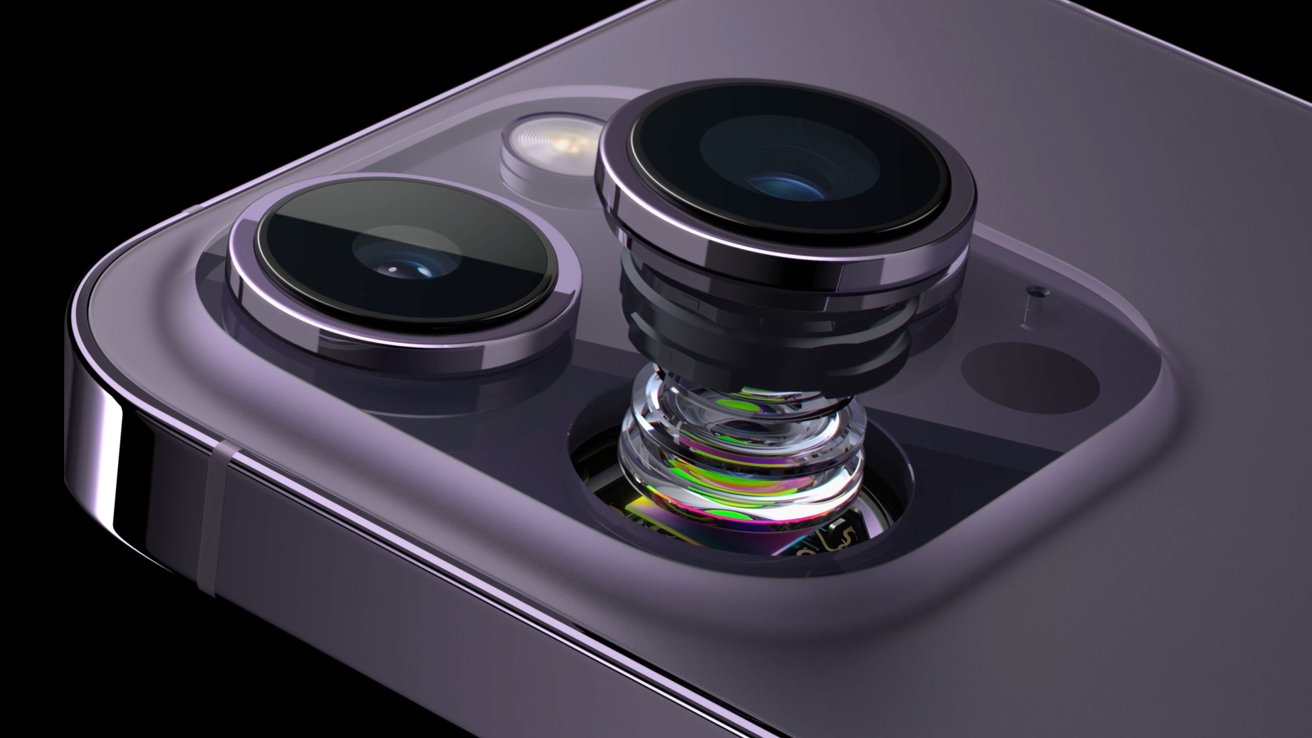iPhone 14 Pro owners complain of shaking camera in third-party apps
Owners of the iPhone 14 Pro are reporting problems recording video in third-party apps with the camera, with the smartphone producing blurry and shaking footage.

Apple's update to the iPhone 14 Pro includes a number of camera changes, including a 48-megapixel sensor and an Action Mode to generate smooth video. However, it seems third-party apps that use the camera are encountering issues with the new hardware.
A number of users are discovering the camera module is shaking when in use in apps including Instagram, Snapchat, and TikTok. First reported by 9to5Mac, the issue is causing video recorded using the camera within the apps to be unpublishable, due to the constant erratic movement.
Posts to social media including Reddit claim there to be a lot of jitters, believed to be a shaking of the optical image stabilization (OIS) system. In the case of the iPhone 14 Pro, the 48MP Main camera has Apple's second-generation Sensor Shift OIS, which physically moves the sensor, while the other uses an older and more conventional OIS system.
Some users claim they can see and hear the shaking and mechanical movement when they use the third-party app's camera features. In one video demonstrating the issue, the iPhone is seen slightly moving and generating a grinding noise.
It is unknown how many iPhones could be affected by the issue. AppleInsider tried, and failed, to reproduce the bug independently.
While the problem manifests with third-party apps, it doesn't seem to occur when using the default camera app included in iOS 16. This may indicate that there could be a software problem that needs to be addressed by the apps in how they communicate and work with the camera module.
It's also plausible that Apple could release an update to iOS 16 that eliminates the bug. At this time, it is unclear what Apple's response will be to the phenomena.
Read on AppleInsider

Apple's update to the iPhone 14 Pro includes a number of camera changes, including a 48-megapixel sensor and an Action Mode to generate smooth video. However, it seems third-party apps that use the camera are encountering issues with the new hardware.
A number of users are discovering the camera module is shaking when in use in apps including Instagram, Snapchat, and TikTok. First reported by 9to5Mac, the issue is causing video recorded using the camera within the apps to be unpublishable, due to the constant erratic movement.
Posts to social media including Reddit claim there to be a lot of jitters, believed to be a shaking of the optical image stabilization (OIS) system. In the case of the iPhone 14 Pro, the 48MP Main camera has Apple's second-generation Sensor Shift OIS, which physically moves the sensor, while the other uses an older and more conventional OIS system.
Some users claim they can see and hear the shaking and mechanical movement when they use the third-party app's camera features. In one video demonstrating the issue, the iPhone is seen slightly moving and generating a grinding noise.
It is unknown how many iPhones could be affected by the issue. AppleInsider tried, and failed, to reproduce the bug independently.
While the problem manifests with third-party apps, it doesn't seem to occur when using the default camera app included in iOS 16. This may indicate that there could be a software problem that needs to be addressed by the apps in how they communicate and work with the camera module.
It's also plausible that Apple could release an update to iOS 16 that eliminates the bug. At this time, it is unclear what Apple's response will be to the phenomena.
Read on AppleInsider


Comments
The problem is Apple’s fault. They didn’t announce their new hardware and kept their new software the same despite releasing iOS16 betas to keep their hardware a secret until launch. No third party developer had the opportunity to update on time. Lame.
It seems that not every user who uses those 3d party apps experience the problem. Appleinsider, as mentioned in the article, couldn’t reproduce the issue.
So it’s not purely the 3d party app, or how they use API. Other factors could be involved.
In theory they perhaps only have to recompile with minimum changed but now using their latest framework. It’s probably a very easy fix since the third party developers don’t have direct access to hardware anyway.
Apple does need to give third party developers an opportunity to update their apps when they publish a new API. The reason I notated “versioning” in quotes is because a new version of an existing API is actually (at a programming level) an entirely new API even if it is a superset of an existing API that subsumes all of the interfaces, methods, and data types from its predecessor in addition to adding new ones.
I don’t agree if you’re saying that Apple should have somehow made prerelease hardware available to third party developers so that they could implement necessary “compensation” on their side to account for the new camera hardware behind an existing public API. Having to do so would admit that Apple seriously violated the whole notion of having an API in the first place, since an API is very much a contract. It would be totally reckless, lead to massive breakage, and be a nightmare for end users.
Something is broken here and it’s very likely on Apple’s side because they are the point of commonality here. But I cannot imagine that Apple would be as stupid as breaking an API contract or even remotely consider placing its app ecosystem partners in a position where they are expected to rejigger their use of existing APIs to compensate for behavioral changes behind Apple’s APIs.